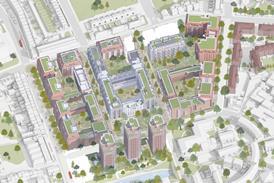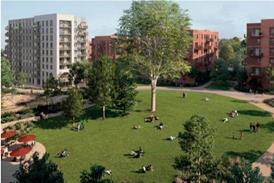Anna Beckett makes the case for treating contractors as part of the design team from the outset, suggesting that earlier collaboration could help bridge the gap between low-carbon ambition and what’s actually buildable

I recently chaired an event about the practicalities of steel reuse with two contractors as part of the panel. At one point one of them made a comment about the design team “making up random percentages” during the planning process about the amount of steel that might be able to be reused.
Initially I felt a little offended. Sure, we don’t always get it right, but at worst it’s an educated guess, right? But the more I thought about it the more valid I thought the comment might be. After all, as engineers and architects we know a lot about how materials can be used (or reused) but we know considerably less about how to get it in or out of a building. And if you can’t remove it then you can’t reuse it.
The idea that including contractors earlier in the design process can help to improve sustainability has been discussed many times, and yet it’s still unusual for a contractor to be included until after Stage 3, by which point most of the major decisions about the design have already been made. And what’s more, by that point if there’s a construction or procurement issue with what’s been designed, it’s likely that it will be substituted for something more traditional, regardless of the carbon impact.
In any design, we have the biggest opportunity to make changes that can significantly impact both the cost and carbon of our designs at Stage 1 and 2, but if we’re not fully considering whether or not a design can be built then those savings may never be realised.
It’s a concern that also seems to be shared by planners. As design teams propose more ambitious schemes to deliver more whilst still reducing carbon, planning departments are becoming frustrated with schemes that over promise and under achieve and as a result the requirement to demonstrate that the proposals are achievable is increasing.
Perhaps it’s time to start considering contractors as part of the design team
An engineer or architect will have some insight into the construction methodology, but they’re unlikely to be able to comment on the way that having a crane on site to facilitate steel removal might impact site movements or change construction sequences. They’re equally unlikely to be able to advise on how additional temporary works might impede other works on site leading to an elongation of the programme. An experienced contractor, however, is likely to be able to see all of these issues coming and provide advice about what’s realistic and possible.
The issue, of course, with appointing a contractor earlier in the design is that it’s far more difficult to cost a scheme or tender competitively when all of the details haven’t yet been worked out. Clients may be rightly concerned that an early appointment may not lead to best value for money and may add cost during the design period. But an alternative could be for contractors to be appointed for initial advice during the planning period as a totally separate service which may help to resolve some of these concerns, whilst still providing value for both the client and the contractor.
Either way it’s clear that if we are going to build efficiently, reuse materials and reduce carbon then buildability needs to be considered much earlier in the design process. Engineers and architects can go some way towards providing this, but ultimately the best advice will come from the experience and knowledge of a contractor, especially if they are also interested in sustainable design. Perhaps it’s time to start considering contractors as part of the design team so that we can work together to produce some more realistic estimates and make those random percentages a thing of the past.
>> Also read: In praise of contractors
>> Also read: A stint in construction could be what architectural education is missing
Postscript
Anna Beckett is an associate director at Buro Happold
















No comments yet